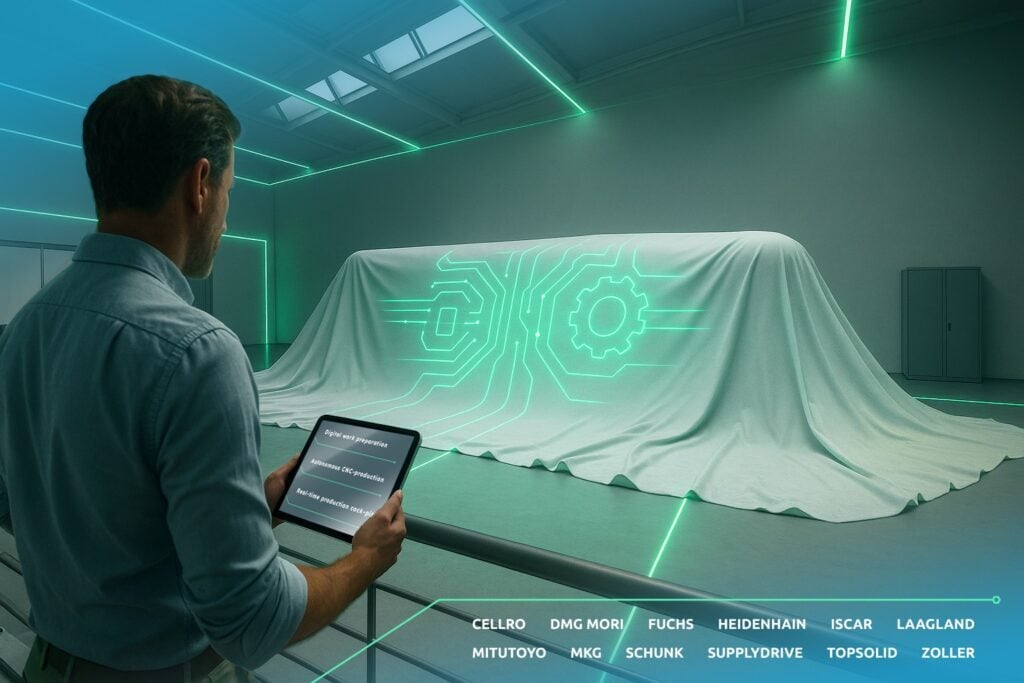Green ERP: Energy Management Made Easy
Published: January 22, 2024
Last update: August 20, 2025
Industrial companies should put more focus on sustainability. This requires a precise analysis and the reduction of emissions, resource consumptions, and costs. Our acquisition of ENIT has empowered us, a leading provider of ERP+ software solutions for mid-market manufacturing companies, to develop a green ERP system which offers an integrated and efficient solution.
The pressure on industrial companies to refine their sustainability targets is increasing continuously. This pressure arising from various sources, including politics, society and economy, is becoming more tangible over time. Due to this trend, companies are confronted with complex challenges, such as transparently presenting their carbon footprint. However, it's not only important to monitor direct emissions but also to consider indirect emissions outside the company premises. This comprises aspects like carbon emissions released during the production of imported steel from countries like China, the way employees get to work, the management of production waste, and the attribution of the emissions to this waste.
These examples show that it can be a complex endeavor to determine the corporate carbon footprint. On the bright side, technology is constantly evolving, and some companies have worked hard to develop simple and reliable solutions, so that every company can face this challenge with confidence.
Green ERP with ENIT and proALPHA
As an ERP+ provider, we acquired the innovative Freiburg-based start-up ENIT back in 2022, and integrated their system into our own ERP system. "This merger really makes sense since an ERP system and the contained data lead to a more efficient use of resources," says Lucas Leinweber, Team Leader of Carbon Management at the group company ENIT.
ENIT is a spin-off of the Fraunhofer Institute for Solar Energy Systems. Since 2014, ENIT has been independently developing tools to help industrial companies understand and reduce emissions, consumptions, and costs. Initially, they focused on the energy management system. Their noble goal was to defy the heterogeneity of industrial companies and develop an energy management system with a customizable approach that can be easily installed.
Just plug and play
This has been achieved exemplarily. Thanks to the plug-and-play approach, companies can access the first data transmitted by the meters installed on the machines and plants already on the first day after implementing the software. "One reason for the fast and easy implementation is that we've opted for an open approach with interfaces, which is compatible with almost every hardware on the market," says Lucas Leinweber. "As soon as the ENIT agent is up and running, we receive a notification. After making some adjustments and security settings, we add the existing meters. The customer then receives an e-mail with access to the software, and can immediately view the real-time data of the first meter."
The carbon accounting software
The energy management system is only a small part of a bigger picture when it comes to identifying and quantifying all relevant energy flows. "This is where our carbon accounting software comes into play, which we provide to companies together with customized services. Of course, the data from the energy management system are adopted into ENIT carbon, our carbon accounting tool," Lucas Leinweber explains.
However, the carbon accounting tool can also be used without an energy management system. In this case, energy consumptions have to be entered manually and are then evaluated with emission factors. However, this work is quite cumbersome, especially if you want to track the carbon footprint of several company sites. An energy management system is also important if you want to consistently monitor the transition path.
Carbon accounting
ENIT uses the internationally recognized Greenhouse Gas Protocol Standard (GHG) for carbon accounting. There are three main categories of emissions, which are referred to as scopes: Scope 1, Scope 2, and Scope 3. Scope 1 comprises all direct emissions for which a company is directly responsible. Scope 2 comprises the indirect emissions caused by purchasing power, for example. Companies usually don't generate their own power, but they are responsible for its consumption.
The majority of emissions, especially in the industry, can be found in Scope 3. These are the indirect emissions that arise throughout the supply chain, for example, through the purchase of goods, services, and machines.
Scope 3 is the most challenging for the majority of companies. "We support companies by helping them understand what data they need. We're talking about activity data for accounting and the question: What purchased goods and services do we have to include in the carbon footprint?" explains Lucas Leinweber. Together, we analyze the hotspots and conduct a materiality assessment. This involves specifying which areas to examine and which ones to exclude because they have low carbon efficiency and an unfavorable cost-benefit factor.
|
"When companies combine the ERP system with an MES and a system for machine and plant data collection, they have access to approximately 70 percent of the data required for the GHG protocol already today." Lucas Leinweber, Teamleader CO₂ Management at ENIT |
 |
The role of the ERP system
It's evident that ERP systems play a major role in this context. A recent study conducted by the Center Integrated Business Applications (CIBA) in collaboration with the Institute for Industrial Management (FIR) at RWTH Aachen University, commissioned by proALPHA, reveals that ERP systems beat all other types of business software with regard to data availability since they comprehensively map order management, procurement processes, and production. The new "CO₂-Management mit Business Software" study (only available in German) draws the following conclusion: "When companies combine the ERP system with an MES and a system for machine and plant data collection, they have access to approximately 70 percent of the data required for the GHG protocol already today. Scope 1 data can be collected almost completely. In general, most relevant data are stored in the ERP and MES system."
By leveraging the data already available in the ERP system, companies can significantly reduce the work required for carbon accounting. This process, however, requires the use of additional IT systems or estimations, which can be provided by ENIT.
By integrating ENIT, proALPHA as an ERP provider has therefore made an important step toward a green ERP system. "The merger has brought us even closer to our goal: We want to enable our customers to act sustainably and map carbon emissions transparently and efficiently in their ERP system. This not only helps reduce emissions but also assists companies in achieving their climate targets and remaining competitive," says Lucas Leinweber.


